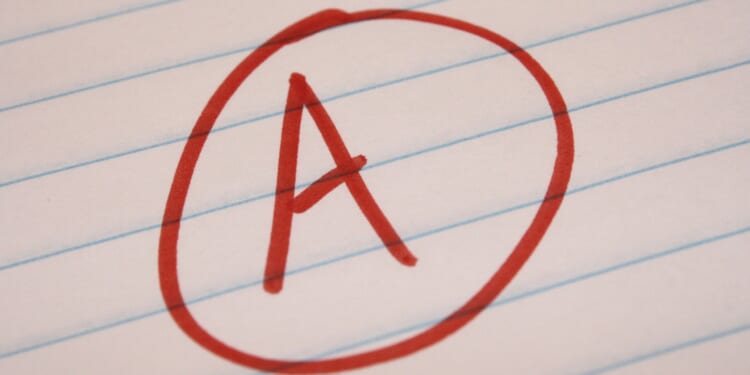A 25-page report released in late October by Harvard’s Office of Undergraduate Education revealed that over 60 percent of all undergraduate grades awarded last year were an A. The median GPA at Harvard has been an A since the 2016-2017 academic year. While past years’ reports have blamed the rising grades on COVID-era distractions or rising student performance, this years’ analysis featured a call for serious institutional reform.
In the report, Dean of Undergraduate Education Amanda Claybaugh argued that the rising share of A grades necessitates reforms to “restore the integrity of our grading and return the academic culture of the College to what it was in the recent past.” She also warned that Harvard’s current grading system is “damaging the academic culture of the College.”
Current Harvard students, accepted into the Ivy League school under an increasingly harsh admissions process that continues to prioritize high school extracurriculars, pushed back. In a rebuttal published in the student newspaper The Crimson, students argued that the purpose of a Harvard education was not, in fact, to immerse oneself solely in the classroom experience, but to become a campus dilettante. A few student quotes are below:
“I killed myself all throughout high school to try and get into this school. I was looking forward to being fulfilled by my studies now, rather than being killed by them.”
“I can’t reach my maximum level of enjoyment just learning the material because I’m so anxious about the midterm, so anxious about the papers, and because I know it’s so harshly graded. If that standard is raised even more, it’s unrealistic to assume that people will enjoy their classes.”
“What makes a Harvard student a Harvard student is their engagement in extracurriculars. Now we have to throw that all away and pursue just academics. I believe that attacks the very notion of what Harvard is.”
“[Increasing grading standards is] doing student [athletes] a disservice because it’s not really accounting for what we have to do on a day to day basis, and how many hours we’re putting into our team, our bodies, and then also school.”
The students faced mockery from pundits for their emphasis on academic enjoyment and extracurriculars, but not every comment was worthy of derision. Another student argued that higher grading standards held at Harvard alone would profoundly impact Harvard students’ future prospects. After all, graduate schools and law schools often simply look at a student’s GPA, not their individual coursework and the perceived difficulty of the work.
“Addressing [grade inflation] only at Harvard is potentially dangerous for these students that are looking to go on to the next level or need these high grades,” Stephen A. Behun ’28 said. “I just worry that we’re putting the cart before the horse when it comes to fixing this without fully understanding how it’s going to impact students professionally, even if it academically helps them master subjects.
Grade inflation is a systemic problem, not an issue localized to Harvard. At every level of our academic system, the sign of an “A” has become a sign of basic competency, not of excellence. But since the “A” is widely known to signify something lesser than excellence, denying an average student an A can harm their future prospects in a more significant way than their teacher might intend by assigning a fair mark. Teachers, understandably, capitulate to administrative pressure.
Harvard’s newfound institutional commitment to recreating a rigorous academic culture can mark the beginning of a new era. Institutions should follow their lead by examining their own grading distributions to decide if current grading practices reflect their academic intentions.
One place for Minnesota to begin is with the University of Minnesota system. Every year, the University of Minnesota system produces a publicly available report that shows the mean grade point average by designator and course level, on the percentage of A’s awarded by course level, and on overall collegiate grade point averages. The most recently available report covers the 2023-2024 academic year.
A cursory scan shows that an A is assigned at the University of Minnesota the majority of the time (over half of all grades) for courses across campuses and academic colleges, with the likelihood that a student will receive an A growing higher (often into the high 50-60 percent of all grades given) within the Twin Cities Campus. These grades seem comparable — or even higher — than the marks that recently concerned Harvard’s administrative team.
Within the College of Arts and Sciences in the Twin Cities campus, the average percentage of A grades, including all course levels, was 62.12 percent. Within the College of Biological Sciences (Twin Cities) the average percentage of A grades across all course levels was 44.56 percent. And, within the School of Nursing (Twin Cities, across all course levels) the grade of A accounted for 76.46 percent of all grades.
At first glance, these grade allotments seem quite high, and occasionally worryingly so. (Not many people want their nurse to cruise through nursing school, after all!) Yet, the ultimate decision-maker of the grades at the University of Minnesota is the group of administrators that guide the school. If they are confident that their scholars are prepared for life after graduation, a letter grade of any type might appear superfluous. It’s a confident gamble. Their choice to have high grading practices must be balanced by robust pedagogy in order to avoid a public education collapse.
Harvard’s recent leadership towards balanced grading in the private school sphere is an invitation for the U to lead in the public school arena. Ultimately, it is up to the leadership at the University of Minnesota to engage with their graduates’ data and decide how they will create a rigorous academic environment.











